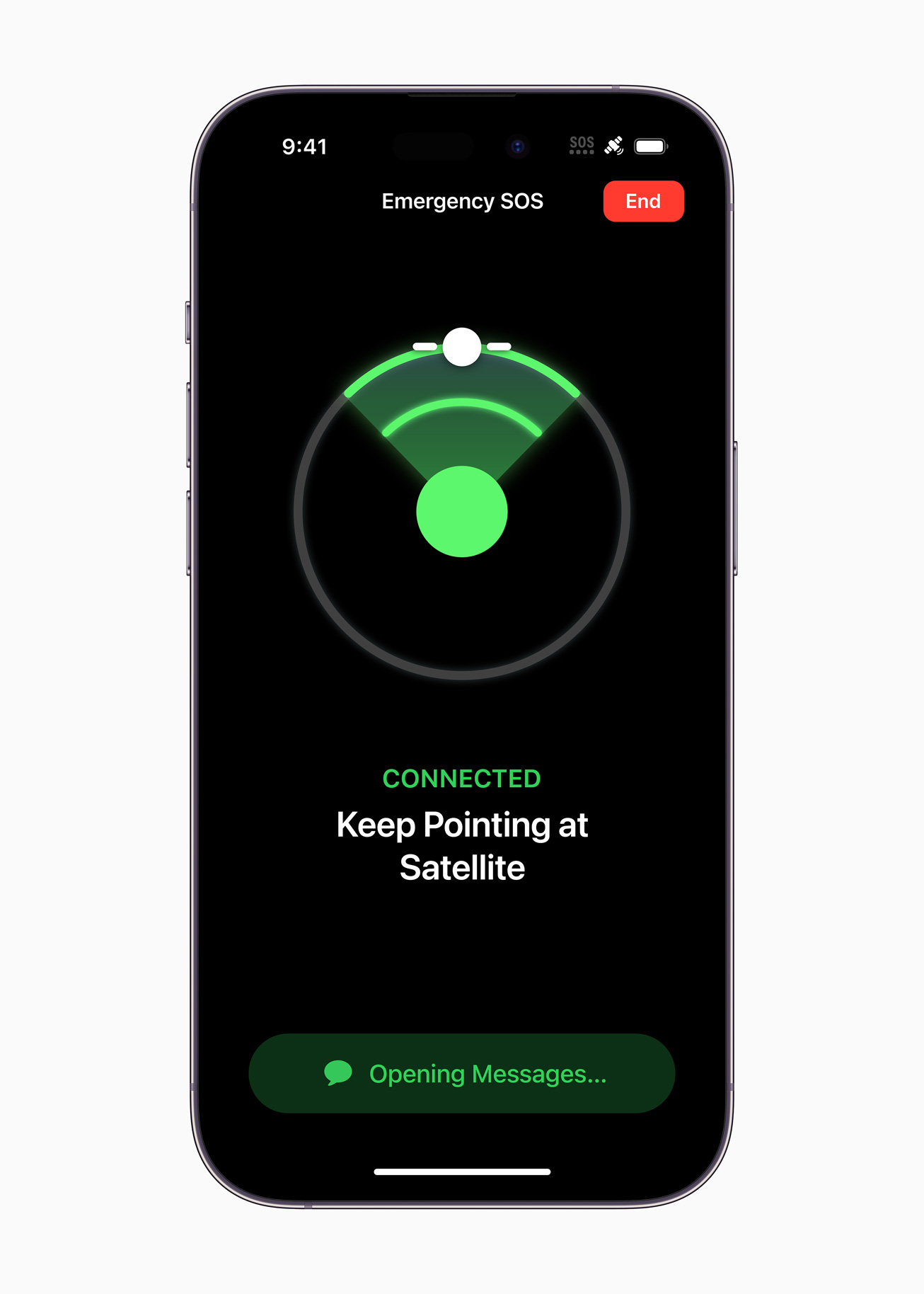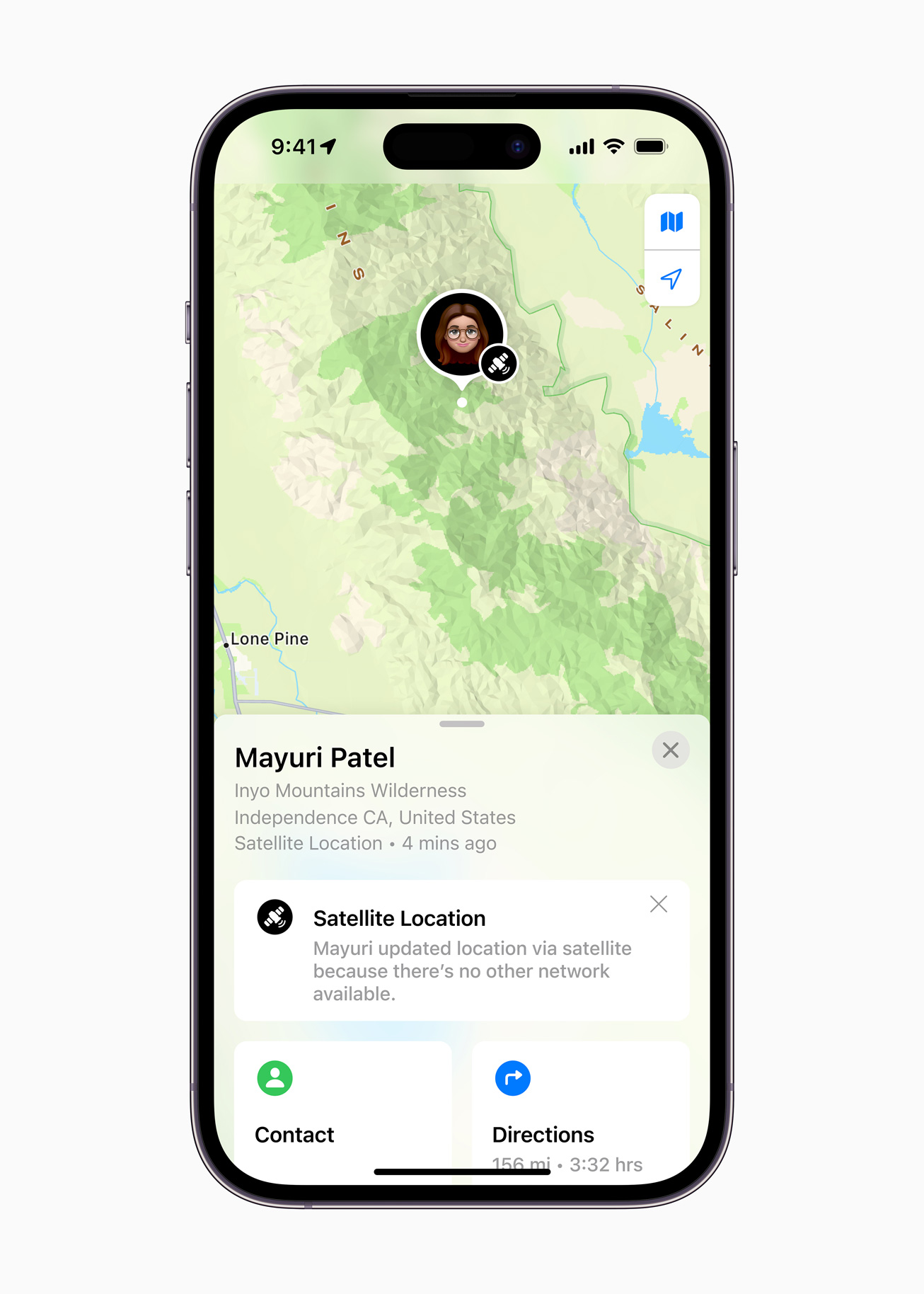Earlier today Apple announced that its new generation of phones, It will allow sending distress messages and sharing location by connecting directly to satellites. So, how exactly it will work? Apple explains that the Energency SOS feature will work when the user is outdoors and with a clear view of the sky.
Apple also claims that under ideal conditions a message should be send in less than 15 seconds. With light foilage it can take several minutes. Users will be promted to point the phone towards the closest sattelite with an interface similar to Find My screen.

Emergency SOS will be a paid service, but for now all iPhone 14 and iPhone 14 Pro buyers will get a two year subscription for free. The feature is set to go live in November, so for now we have a rather limited technical information about it. Remove All Ads on Universe Today Join our Patreon for as little as $3! Get the ad-free experience for life Satellite connectivity will also be a feature exclusive to iPhone 14 generation, as it uses custom hardware and software solutions.

Meaning that there are special antennas encorporated in the iPhone 14 design that are different from the usual GSM module providing connectivity like 5G. The satellite provider for Apple is Globalstar. It wasn’t specifically mentioned during the presentation though.
But Globalstar confirmed that it will allocate 85% of its current and future network capacity to support the Services. GlabalStar is operating a constellation of 48 satellites in LEO. They are placed in eight orbital planes of six satellites each with an inclination of 52°.
This means they can provide service on Earth from 70° North latitude to 70° South latitude. Meaning the iPhone 14 satellite connectivity won’t work in polar regions. The company has been providing satellite communication services for a while now.
But the devices used for this were bulky and nowhere near to an iPhone in terms of user experience. They were also not exactly cheap. The latest model of Globalstar’s satellite phones, Spot X, costs $250.
With a black-and-white screen and very limited functionality. Apple aren’t the first who announced direct-to-phone satellite connectivity. In the past a company called Lynk did a demonstration of sending text messages to unmodified phones from LEO.
But more importantly, just a few days ago SpaceX and T-Mobile held a presentation where they anncounced that Starlink will provide direct-to-phone connectivity for T-Mobile clients in the near future. We covered this story in the latest episode of Space Bites . Of course, the timing just before the Apple announcement wasn’t a coincedence.
The main difference between Apple and Starlink here is that the latter won’t be exculsive to specific iPhones. Apparently, it will provide connectivity to any exisiting phone and won’t require and special hardware. However, it will have another kind of vendor-lock, as for now the deal is exculsive to T-Mobile.
Another obvious thing is that GlobalStar will have much less satellites than Starlink. Meaning that the number of availavle satellites in direct view of the user will also be less at each given moment of time, thus limiting available bandwidth. An inderect proof of very limited bandwidth is the face that Apple claims it will use a special protocol to compress text messeges up to 3 times.
Whereas T-Mobile and Starlink announced that they will achieve 2-4 megabits/s per cell with their service, which should be enough for text messages and limited phonecalls. At the same time, SpaceX’s solution will only work with Starlink V2 satellites. The problem is that they can only be launched with Starship, which is yet to become operational.
Without Starship and SuperHeavy flying regularly and sending a bunch of new heavy Starlinks with much bigger antennas, the service won’t be able to function. It seems like we have yet another space race on our hands. The progress in hardware and with more and more satellites launching every year, it seems like the market of satellite service providers that can communicate directly to phones is emerging.
For now it’s just Apple-Globalstar against SpaceX-T-Mobile, but I wouldn’t be surprised if we’ll see new players in the coming years. Will Jeff be joining the club with Project Kuiper? It is also interesting how both companies (as well as their future competitors) will handle other problems. For example, getting licences to operate worldwide can be a big issue that is not related just to hardware and software.
For example, Apple’s UltraWide Band features aren’t available in some countires due to frequency restrictions. Starlink is also unavailable in certain countries for similar reasons. So, legal challenges can be as hard as hardware ones.
But it’s great that we have a new market with space technology directly involed. And it’s also really good that we don’t have a monopoly forming straight away. After all, having diverse techincal solutions as well as competing servie providers should be good for everyone.
.
From: universetoday
URL: https://www.universetoday.com/157474/iphone-14-will-have-satellite-connectivity-how-exactly-it-will-work/



